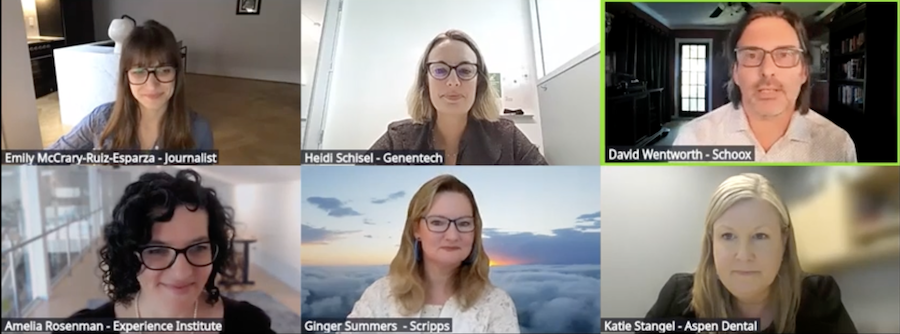Activating Learning in the Age of AI: Practical Approaches and Tools That Make an Impact


As companies rush to integrate AI tools into daily workflows, a challenge has emerged: how to make the technology feel less like a threat and more like a skill everyone can master. Across industries, from tech to media, employers are rolling out training programs that make AI literacy fundamental and fully integrated.
At biotech firm Genentech, every employee receives training in foundational AI principles, ethics, and responsibility. The company encourages staff to experiment with tools in sandbox environments, supported by live sessions and peer learning where colleagues can show off what they’ve built or learned. They’ve even developed internal “tech geniuses” who act as one-on-one tutors.
“We want to make sure everyone’s got the same starting place, but also room to experiment and explore in such a way that they want to learn more and be more advanced in their capabilities,” said Heidi Schisel, Genentech’s VP of people and culture, during an executive panel discussion at From Day One’s August virtual conference.
At Aspen Dental, the company appointed a head of artificial intelligence to its IT team and made AI training mandatory. But not everyone was immediately enthusiastic. Right away, employees were worried about their job security, says Katie Stangel, VP of learning and development. Others feared they’d be seen as “cheating” if they used AI.
To normalize the tools, Stangel created a Teams group dedicated to sharing and celebrating responsible AI use. “People are starting to celebrate and call out when they’ve used it, saying, ‘I use ChatGPT to help me with this outline,’ or ‘I used Articulate AI to help me with the design and development of the course.’ We celebrate that,” she said.

Experts say AI literacy develops in stages—from unstructured experimentation to true automation and augmentation of work. Leaders, especially, often try to skip steps, said Amelia Rosenman, director of programs at the Experience Institute, but “learn out loud” cultures are key if adoption is to be company-wide. “If the leader isn’t showing that they’re making mistakes, or that they haven’t figured out all of the answers, then everyone feels that they should have it all figured out by now,” she said. “Share both your successes and your failures. That’s what creates that safe environment, that risk-free sandbox.”
No one needs to be an expert yet, says David Wentworth, VP of talent at frontline learning management platform Schoox. “Let’s move past that and focus on results: What are we trying to do? Always tie it to real problems and real outcomes,” he said.
The good news is, many companies already have standard operating procedures and ethics guidelines they can apply right away to get AI training up and running. “Don’t think that you have to start a whole new paradigm about how to approach this thing,” Wentworth said. “You’re probably 60, 70, or 80% of the way there. Just tweak it a bit to fit your current needs.”
At multimedia company Scripps, AI tools are helping new reporters develop their skills faster. “Human coaches are amazing, but there’s something about an AI mentor that’s completely nonjudgmental,” said Ginger Summers, senior director of L&D.
Their AI tool gives feedback on drafts, helping reporters think critically about sourcing and permissions, without having to tap their peers. About 20% of newsroom employees now use the tool one to two hours per day, saving roughly 20 minutes of work each time. “They’re still learning to use it,” Summers said, “but the time savings are amazing.”
This is an excellent example of a successful roll-out of AI as a learning and development tool. Ultimately, said Rosenman, companies must be clear about why they’re implementing AI, and the results they’re achieving. If employees fear that AI is threatening their jobs, panic will quickly spread.
“There’s so much opportunity for the smartest, most creative minds in media to eliminate the drag that keeps them from doing the work they do,” read a late-summer edition of the business newsletter Feed Me. “This instinct, too often, is to hire a COO, a CTO, a chief of staff, or a small army of ops staff, but if you develop prompt engineering skills, commit time to investing in these tools, you can replace huge chunks of that infrastructure and stay small, fast, and creative.”
While some companies may be looking for ways to cut their workforces in half, many companies want to become more efficient without hiring anyone new or expand expertise more quickly, said Rosenman. When employees know that, the message shifts from existential threat to helpful teammate.
Emily McCrary-Ruiz-Esparza is an independent journalist and From Day One contributing editor who writes about business and the world of work. Her work has appeared in the Economist, the BBC, The Washington Post, Inc., and Business Insider, among others. She is the recipient of a Virginia Press Association award for business and financial journalism. She is the host of How to Be Anything, the podcast about people with unusual jobs.
(Photo by gorodenkoff/iStock)
The From Day One Newsletter is a monthly roundup of articles, features, and editorials on innovative ways for companies to forge stronger relationships with their employees, customers, and communities.